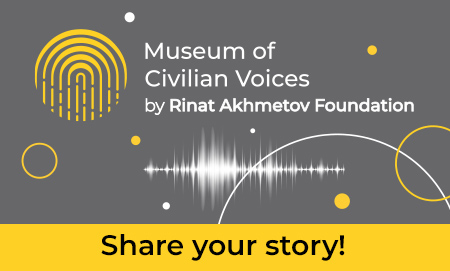«Your assistance was needed and will always be needed», -an endovascular pediatric surgeon

In Ukraine, more and more people complain about heart problems every year: ecology, stress, malnutrition - all this may lead to a terrible diagnosis. In an interview for the Today newspaper the cardiac surgeon Andrii Maksymenko talked about his work and how the Ukrainian patients find money for expensive operations.
“Andrii Vitaliiovych, what is the specificity of your work in the Centre of Pediatric Cardiology and Cardiac Surgery?”
“I am an endovascular pediatric surgeon. I operate without incisions on children with congenital heart disorders. The incision isn’t necessary, because in order to get to the heart with our instruments, we use the leg vessels. With such operations there is no incision of the thorax, which is why the method is called the minimally invasive surgery. We penetrate a child’s heart with special tools – catheters - through the vessels, thus eliminating the congenital problems.”
“Are such operations complicated and traumatic?”
“The advantage of such surgeries over the classic ones with an incision is that there is no need in deep anesthesia, artificial circulation, the children easily tolerate this operation and there is virtually no rehabilitation period. The very next day after the operation the child can lead a normal life. Of course, if there are no accompanying problems.”
“Who was your smallest patient?”
“It was a newborn, premature baby weighing about 1,200 grams. Immediately after birth, he underwent heart surgery. Then he was nursed in a special clinic for such babies, from where he was discharged home. Such cases are not uncommon. Recently, there was a child with the same weight, too. We performed a balloon aortic valvuloplasty and the Botallo's duct ligation - it was more difficult.”
“What are the main challenges for doctors during the operation of an occluder installation on children?”
“The key point is the correct evaluation of the septal defect and the correct selection of patients, because there are cases where it’s not possible to treat this defect. In addition, it is not always easy to say before surgery, especially if the defect is complex, whether it is possible to treat this defect with an occluder or not. Sometimes the decision is made during the operation itself. But if the defect is treated with an occluder, then the patients usually do not face serious problems. The probability of complications in children during such operations (I mean those complications that threaten the child’s life and require additional operations) does not exceed 2.5-3%. I emphasize: this is the risk of complications, not lethality! The risk of lethality is less than 0.5%. With proper selection of patients, the risk of implantation-connected problems is very low.”
“Do you control the condition of children before and after the operation?”
“Of course, I always examine the condition of the child before and after the operation, I communicate with them. Then, on their follow-up visits, I observe them in one month, in three months and in half a year after the surgery. We check the position of the occlude and examine if everything is in order after the implantation.”
“Were there any operations or children in your practice that you remember most?”
“I remember children with very serious concomitant pathologies. I remember a 7-year-old girl with severe respiratory failure, who also had scoliosis. It was difficult for the child to simply walk and breathe, and the defect of the interatrial septum aggravated her condition. It was clear that it was impossible to operate with an incision on a girl with such a deformed thorax. We were able to treat her defect of the interatrial septum endovascularly. She felt much better, and the surgeons are already planning an operation to correct her spine deformation which they were afraid to do before, because in the presence of heart disease such a serious operation involves risks, blood loss and trauma.”
“Do you know where patients find funds for such costly operations?”
“Today, about 30% of our patients have the opportunity to treat the defect of the interatrial septa at public expense. In 2017, the funding was better than in previous years. Children, especially those who have social problems - for example, children from orphanages, HIV-infected children or those having severe concomitant pathologies and other problems - can receive occluders for free. But the state funding is not always enough. We send the rest of the children to various funds with which we cooperate and which we trust, including the Rinat Akhmetov Foundation. Four or five years ago, the parents of 90% of children who needed an occluder implantation had to buy it at their own expense.”
“When did your cooperation with the Rinat Akhmetov Humanitarian Centre begin?”
“The cooperation has been going on for a long time, and as for the targeted assistance, it started since the beginning of the anti-terrorist operation in Donbas, when we began to treat people from the territories uncontrolled by the Ukrainian authorities. That is, since 2014. Thanks to the Rinat Akhmetov Foundation, we operate about 5-6 children displaced from the ATO zone aged from 0 to 18.”
“How can you assess the contribution of Humanitarian Centre to the healthcare industry in Ukraine?”
“I cannot talk about the entire healthcare industry, but in the area of cardiac surgery, the Foundation provides substantial assistance to children. Let's just say: the shortcomings of our medical system are compensated due to the goodwill of the Foundation founder. Of course, the Rinat Akhmetov Foundation's help was needed and will always be needed, because there will always be some emergency, unexpected situations in which rapid allocation of funds will be required. For example, on expensive implants or mechanisms to help children with severe pathologies. We see children who can simply perish without this help with our own eyes...”




